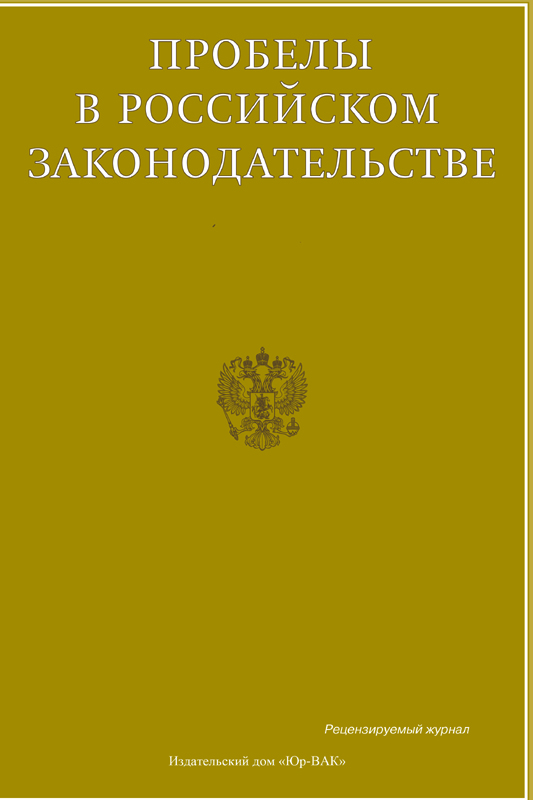Cyber Attacks on Critical Information Infrastructure as a Threat to National Security
- 作者: Abidov R.R.1
-
隶属关系:
- North Caucasus Institute for Advanced Studies (branch) of the Krasnodar University of the Ministry of Internal Affairs of Russia
- 期: 卷 15, 编号 4 (2022)
- 页面: 251-255
- 栏目: Articles
- URL: https://journals.eco-vector.com/2072-3164/article/view/531714
- ID: 531714
如何引用文章
详细
The purpose of this study was to study the development of information and communication technologies as the main source of cybercrime. Cybercrimes include crimes committed by using a personal computer to create virus programs, the purpose of which is to carry out computer attacks on objects of human vital activity. Cyber attacks threaten national security by destroying the physical system of the state, transferring control over these systems to a third party, and threatening the confidentiality of personal data. Today, cases of deliberate hacking of critical information infrastructure for the purpose of theft, espionage, intimidation, destruction, etc. have become more frequent all over the world. This is also done to aggravate conflicts up to armed confrontation. It has been established that for the sustainable development of the Russian Federation and its national security, a reliable and secure critical information infrastructure and an improved regulatory framework are needed. The introduction of new technologies is an objective process, but it remains unclear who and how their results will be used. Modern gadgets are equipped with programs based on artificial intelligence. All this can positively serve the goals of the state, special services and law enforcement agencies, or it can become an instrument of an illegal act in the hands of criminals. It is concluded that the entire security system should ensure the prevention of catastrophic consequences of hacker attacks that infringe on people's life support systems, power systems, railways, critical information structure, etc. And this task cannot be adequately solved by the efforts of one agency, i.e. forces of law enforcement structures are not enough to counteract cyber attacks. All major decisions should be made at the interdepartmental level with the involvement of high-tech specialists. This will help form a common picture, identify a common enemy and greatly simplify his prosecution for legal action. The viability of these measures can only be ensured by a common system built on the principle of reliability, based on forecasting the situation and taking into account potential risks for society and the state.
全文:
作者简介
Ruslan Abidov
North Caucasus Institute for Advanced Studies (branch) of the Krasnodar University of the Ministry of Internal Affairs of Russia
Email: gedmur7@gmail.com
Police Major, senior lecturer at the Department of Fire Training Nalchik, Russia
参考
- Federal Law “On the Security of the Critical Information Infrastructure of the Russian Federation” dated July 26, 2017 No. 187-FZ [Electronic resource] // Access mode: http://www.consultant.ru/document/cons_doc_LAW_37867/ (accessed 18.04.2022)
- Begishev I.R. Security of the critical information infrastructure of the Russian Federation // Business security. 2019. No. 1. pp. 27-32.
- Glukhov A.P., Khmelevskaya N.V., Sitnov V.V. Safety of critical information infrastructure // Railway transport. 2022. No. 2. pp. 23-25.
- Danilin E.V., Klyuev V.E., Telenga A.P., Chernikova A.S. Information security of the critical information infrastructure of organizations of the Russian Federation // Information security is an urgent problem of our time. Improving educational technologies for training specialists in the field of information security. 2019. Vol. 1. No. 1(10). pp. 33-38.
- Kalashnikov A.O., Anikina E.V., Ostapenko G.A., Borisov V.I. Influence of new technologies on information security of critical information infrastructure // Information and security. 2019. V. 22. No. 2. pp. 156-169.
- Los L.V. Information security in the system of national security of the Russian Federation // Issues of Russian and international law. 2019. V. 9. No. 3-1. pp. 159-170.
- Seredkin S.P. Security of Critical Information Infrastructure (A Brief Review of Modern Approaches) // Information Technologies and Mathematical Modeling in Complex Systems Management. 2021. No. 4 (12). pp. 30-38.
- Stolyarov V. Security of critical information infrastructure as it is // System administrator. 2018. No. 1-2(182-183). pp. 10-14.
- Nikonenko N.D., Tatyuk A.S. Security of the critical information infrastructure of the Russian Federation // In the collection: Financial and economic security of the Russian Federation and its regions. Collection of materials of the VI International Scientific and Practical Conference. 2021. pp. 74-77.
- Shabrina S.A. Ensuring the security of critical information infrastructure // In the collection: Mavlyutovskie readings. Articles of the XIV All-Russian Youth Scientific Conference. Ufa, 2020, pp. 41.
- Shchelkin K.E., Zvyagintseva P.A., Selifanov V.V. Possible approaches to categorization of objects of critical information infrastructure // Interexpo Geo-Siberia. 2019. V. 6. No. 1. pp. 128-133.
补充文件








